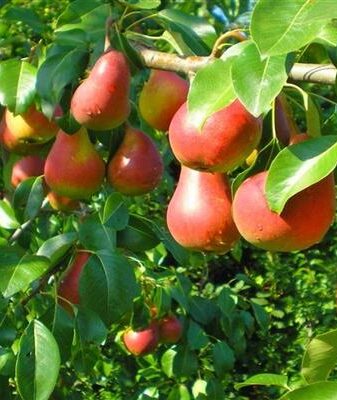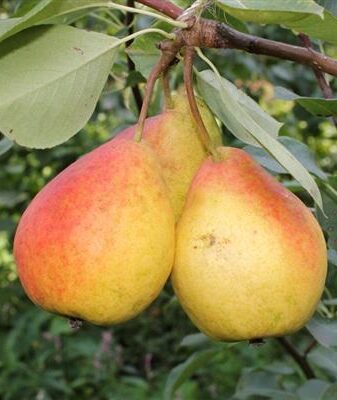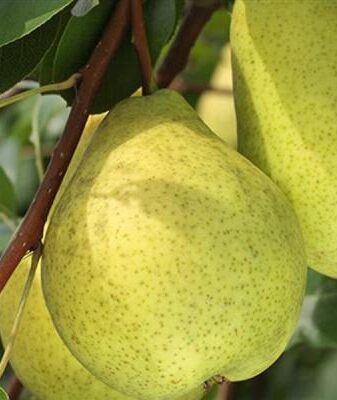Pear Rossoshanskaya large
Content:
Pear Rossoshanskaya large, or as it is also called "Selyanka", refers to late autumn varieties. By free pollination of a seedling of an extremely popular pear variety "Forest Beauty" on the Rossosh zonal OSS, the training breeders A.M. Ulyanishcheva and O.V. Ryazantseva obtained a new variety, which was tested and released in the Central Black Earth Region.
Pear Rossoshanskaya large: variety description
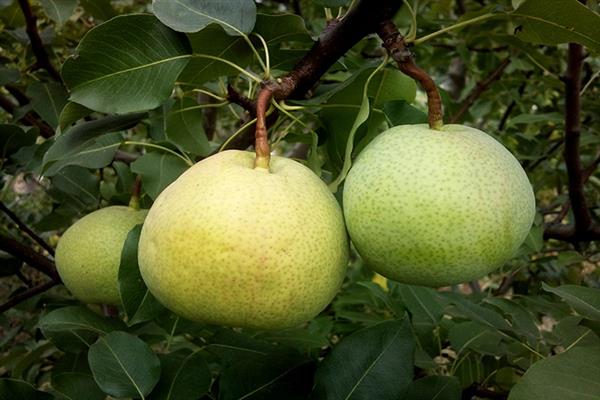
Large Rossoshanskaya pear: photo of the variety
The trees of the large Rossoshanskaya pear variety reach medium height, their not particularly dense crown has smooth rounded-oval outlines. The bark on the trunk and branches that make up the "skeleton" of the tree is gray, the main branches are located almost parallel to the ground. Slightly curved shoots are brownish-brown, no pubescence on them. The reddish-brown buds are loosely compressed and cone-shaped.
The leaves are large, oval, with pointed ends, dark green in color. It blooms with large white flowers, which are collected in umbellate inflorescences.
The large Rossoshanskaya pear is a self-fruitless variety and needs pollinators, that is, a couple of trees of other varieties should be planted nearby, which bloom at the same time as the Rossoshanskaya large pear.
Fruiting begins in the fifth or sixth year.
- Description of the fruit.
The shape of the large Rossoshanskaya pear can be described as "short-pear-shaped", that is, the classic silhouette of a pear is visible, but it is somewhat flattened. The average fruit weight is 180-200 grams. By the time of harvest, the thin skin of the fruit is colored in a light shade of yellow, and the cover color is crimson. The white pulp of the fruit has a light creamy shade, a very light aroma. The taste can be described as sweet with a slight sourness, the fruits contain a very large amount of juice.
The tasting score of fruit on a five-point scale is 4.5 points, while the appearance is rated slightly lower - 4.4 points.
Fruit ripening and harvesting occurs in the second decade of September. The fruit is able to withstand transportation without compromising its appearance, as well as being stored for three to four months. Based on the shelf life, "Rossoshskaya large" pear can be attributed to both late autumn and early winter varieties.
In order for the fruits to be stored as long as possible, during the harvesting process they must be removed from the tree along with the stalk.
Large Rossoshanskaya pear: advantages and disadvantages
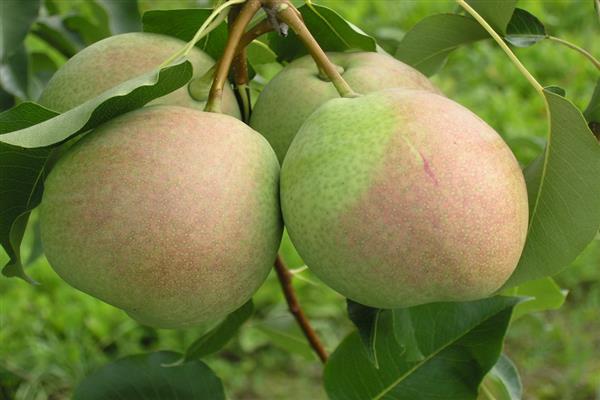
Large Rossoshanskaya pear: photo of the variety
Before buying any plant, each gardener studies different varieties and considers different options, weighing the pros and cons. So, the following qualities can be attributed to the undoubted advantages of the Rossosh large pear:
- Regular (annual) good yield of trees.
- All the characteristics of the fruit: their taste, versatility of use, long shelf life and ability to tolerate transportation.
- High winter hardiness of the variety. But in this matter, clarifications should be made so as not to mislead gardeners from regions with a cold climate. Tests of this variety were carried out in the Central Black Earth District, or rather in the Voronezh Region. During the tests, the trees withstood a drop in temperature to _38 degrees in January, to -25 ... -33 in contrast after the thaw. At the same time, the indicators of damage to tree tissues and vegetative buds were above average.
- Also, in the process of testing, good resistance to some diseases was revealed: to entomosporium and scab.
- This variety tolerates heat well and is highly drought tolerant.
Among the shortcomings of the Rossoshanskaya large pear variety, two important points can be distinguished: insufficient resistance to septoria and severe damage by such an unpleasant pest as a honeydew.
Growing and care
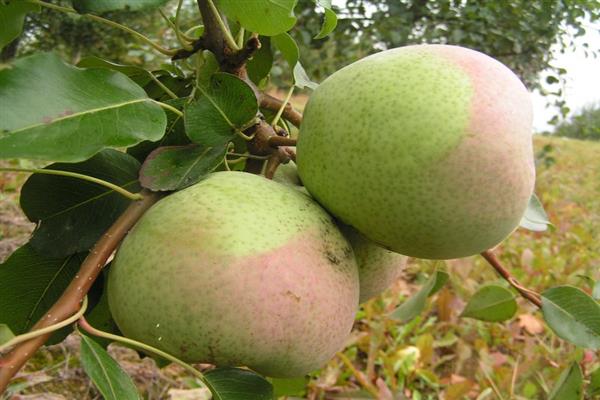
Large Rossoshanskaya pear: photo of the variety
To succeed in growing the Rossoshanskaya large pear variety, you will need not only to support the strengths of the variety, but above all to pay attention to its weaknesses. After all, he who is forewarned is armed. Consequently, attention should be paid annually to the preventive treatment of the tree, aimed at preventing the disease of septoria (or white spot) and the spread of the harmful insect pear tree.
Any spraying should be done when the buds are blooming. It is very important to be in time before flowering, to prevent the appearance of a honeydew, use one of the following drugs: "Aktar", "Inta-Vir", "Iskra", "Confidor", "Fury", "Commander", "Kinmix" or "Sherpa" ... Then, when the petals fall off, a second treatment should be carried out aimed at destroying the most dangerous generation of copperheads (use "Agravertine" or "Iskra").
In the case of the disease "septoria", the main preventive measure will be maintaining the frequency and order in the garden, timely removal of plant residues from the territory of the trunk circle and regular sanitary pruning. The pathogen that causes this disease hibernates on fallen leaves, and during spring rains, the pear tree becomes infected.
As a prophylaxis for septoria, you can use drugs used for scab. Treat the garden annually before bud break, immediately after flowering, and then another 2-3 weeks later with one of the drugs to choose from: 7% urea solution, 1% Bordeaux liquid, 2% copper solution or 5% ferrous sulfate solution.
Using these tips, you can save your garden from trouble and enjoy an excellent harvest of the Rossoshanskaya large pear variety.


